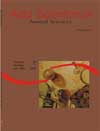<strong>Gonadotrofina coriônica humana e hormônio liberador de gonadotrofina como indutores da reprodução do jundiá</strong> - DOI: 10.4025/actascianimsci.v30i3.929
Resumo
Este trabalho foi realizado com o objetivo de avaliar parâmetros reprodutivos de machos e fêmeas de jundiá adultos após a aplicação do HCG (gonadotrofina coriônica humana) e do GnRHa (hormônio liberador do hormônio gonadotrópico) e compará-los àqueles obtidos quando usado o extrato hipofisário da carpa comum. Etapa 1 (Machos) - quatro grupos, com oito machos cada, receberam os seguintes tratamentos: M1: sem hormônio; M2: extrato hipofisário 0,5 mg kg-1; M3: HCG 200 UI kg-1; M4: GnRHa+inibidor dopaminergético 0,1 glóbulo(Ovopel®) kg-1. Etapa 2 (fêmeas) – 36 fêmeas foram divididas em cinco grupos: F1: extrato hipofisário em duas aplicações, 0,5 e 5,0 mg kg-1; F2: HCG em duas aplicações, 200 e 400 UI kg-1; F3: HCG 400 UI kg-1 em dose única; F4: HCG 1000 UI kg-1 em dose única; F5: GnRHa+inibidor dopaminergético 1 glóbulo(Ovopel®) kg-1. O uso do extrato hipofisário da carpa comum aumentou significativamente o volume de sêmen liberado e estimulou maior quantidade de fêmeas à liberar óvulos. O HCG e o GnRHa não apresentaram resultados positivos no tocante à reprodução induzida do jundiá, nas doses utilizadas neste estudo.Downloads
DECLARAÇÃO DE ORIGINALIDADE E DIREITOS AUTORAIS
Declaro que o presente artigo é original, não tendo sido submetido à publicação em qualquer outro periódico nacional ou internacional, quer seja em parte ou em sua totalidade.
Os direitos autorais pertencem exclusivamente aos autores. Os direitos de licenciamento utilizados pelo periódico é a licença Creative Commons Attribution 4.0 (CC BY 4.0): são permitidos o compartilhamento (cópia e distribuição do material em qualqer meio ou formato) e adaptação (remix, transformação e criação de material a partir do conteúdo assim licenciado para quaisquer fins, inclusive comerciais.
Recomenda-se a leitura desse link para maiores informações sobre o tema: fornecimento de créditos e referências de forma correta, entre outros detalhes cruciais para uso adequado do material licenciado.








































